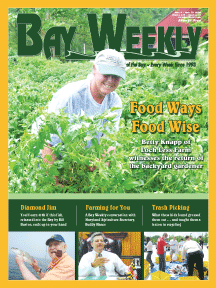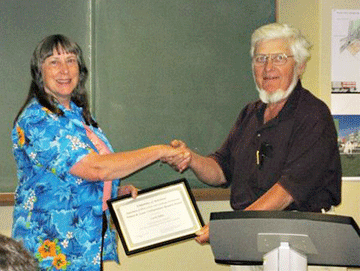
Volume XVII, Issue 23 # June 4 - June 1, 2009 |
 |
by Dr. Frank Gouin
Bad Bugs
These insects suck …
Before you know what’s wrong, spider mites can cause extensive damage to plants such as roses, blue spruce, Alberta spruce and crab apple trees. Several mites can fit on the head of a pin, so you have to look carefully to see them.
On roses, the mites generally attack buds and young leaves immediately below the buds. If you hold a bud against a light or toward the sun, you may see their thin webs.
On blue and Alberta spruce, heavy infestations often appear as a faint rusty red coloration, with the plants having a dull foliage color. Hold a sheet of white paper beneath the foliage of the plants with one hand and beat the foliage with the other to dislodge the mites onto the paper, where you can see them.
Spider mites are sucking insects. They are best controlled by using horticultural oil, which controls all growth stages: eggs, larvae and adults. The oil is easy and safe to apply and approved for use by organic gardeners. Usually a single application at two to three percent will protect for three to four weeks.
On blue and Alberta spruce, the oil will cause the plant to lose its blue-green color soon after the oil is applied. So apply it in early spring before the new growth appears.
Carol D. Allen on the Case
 |
| Carol D. Allen: 2009 winner of the Francis R. Gouin Undergraduate Research Grant. |
Sucking insects such as spider mites, aphids and plant-hoppers transmit plant viruses. Do chewing insects such as Australian cockroaches, which relish orchids, feeding on the succulent young growing shoots and aerial roots?
That’s the problem being studied by Carol D. Allen, the winner of the 2009 Francis R. Gouin Undergraduate Research Grant.
Allen is a senior at the University of Maryland Department of Plant Science and Landscape Architecture. In controlled atmospheric growth chambers, Allen will grow virus-free Onicidium Sweet Sugar Kalender orchids next to the virus-infested plants of the same cultivar. In the same chamber will be growing Nicotiana tabacum Xanthi, which also caries the tobacco mosaic virus. Once the plants are acclimated, she will release Australian cockroaches. After feeding injury is visible on all orchids, the virus-free orchid will be tested for nine viral agents.
Allen receives $1,000 for conducting her research and an additional $1,000 to cover her expenses if she attends a national or regional plant science meeting to present her research findings.
This grant is supported by lectures and manuscripts prepared by the Bay Gardener. Bay Weekly is a major contributor.
If you enjoy Bay Gardener columns, you, too, can contribute: Make checks payable to: The University of Maryland and send to Ms. Marie Bryer, Dept. of Plant Science and Landscape Architecture, University of Maryland, College Park, MD 20742-4452.